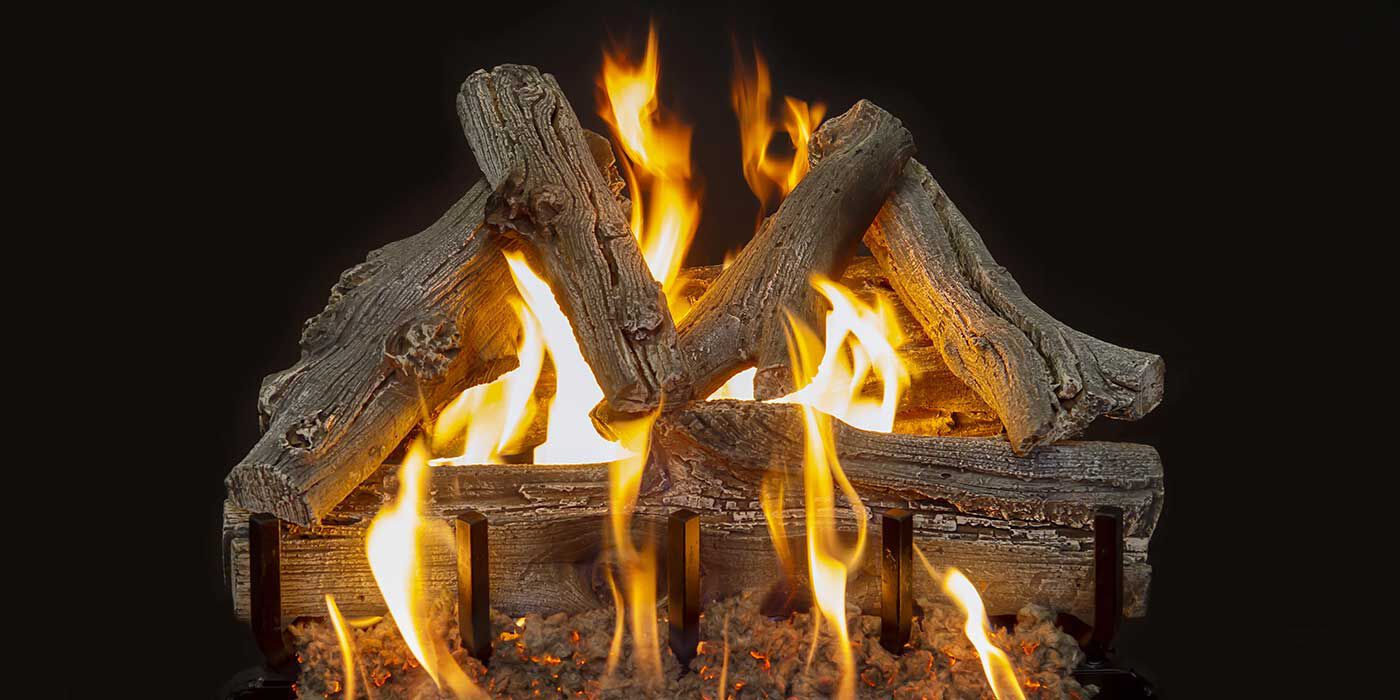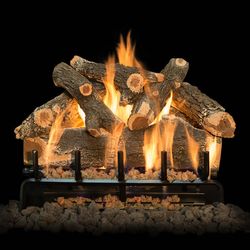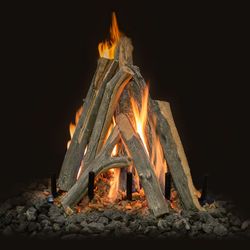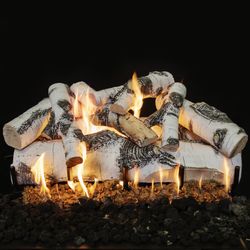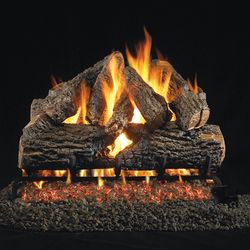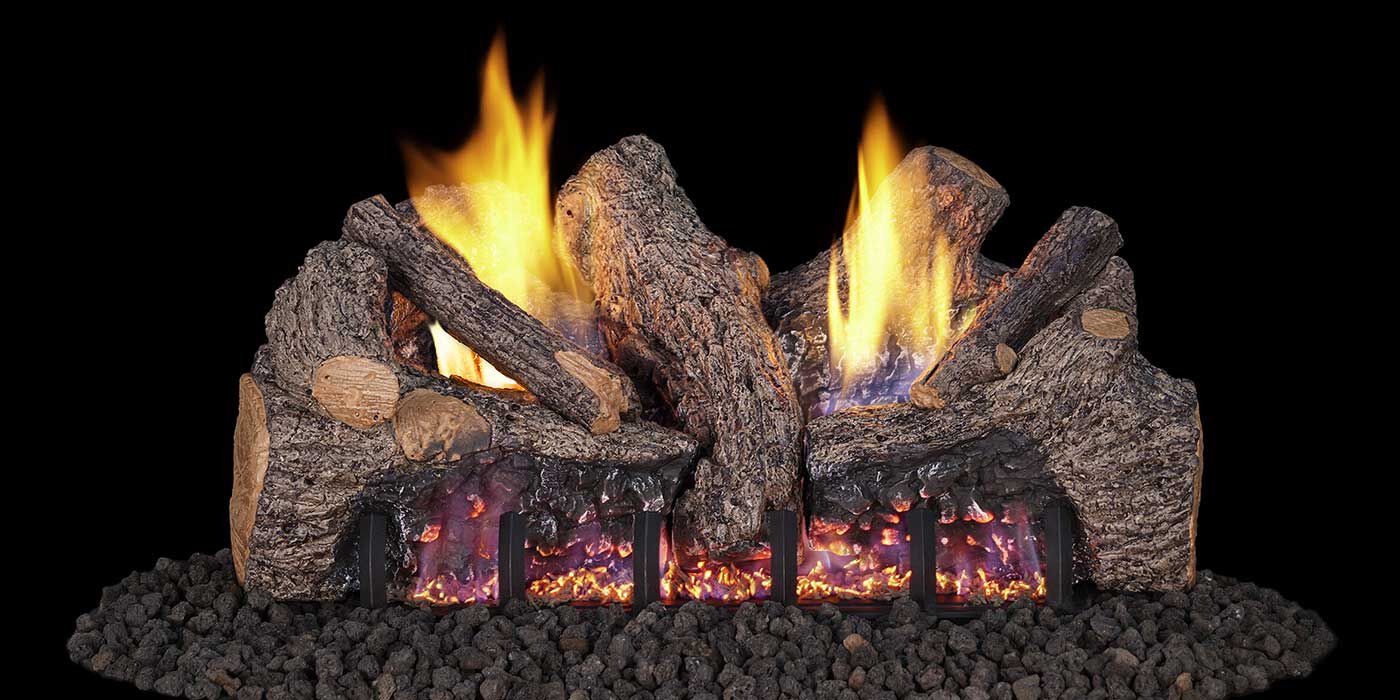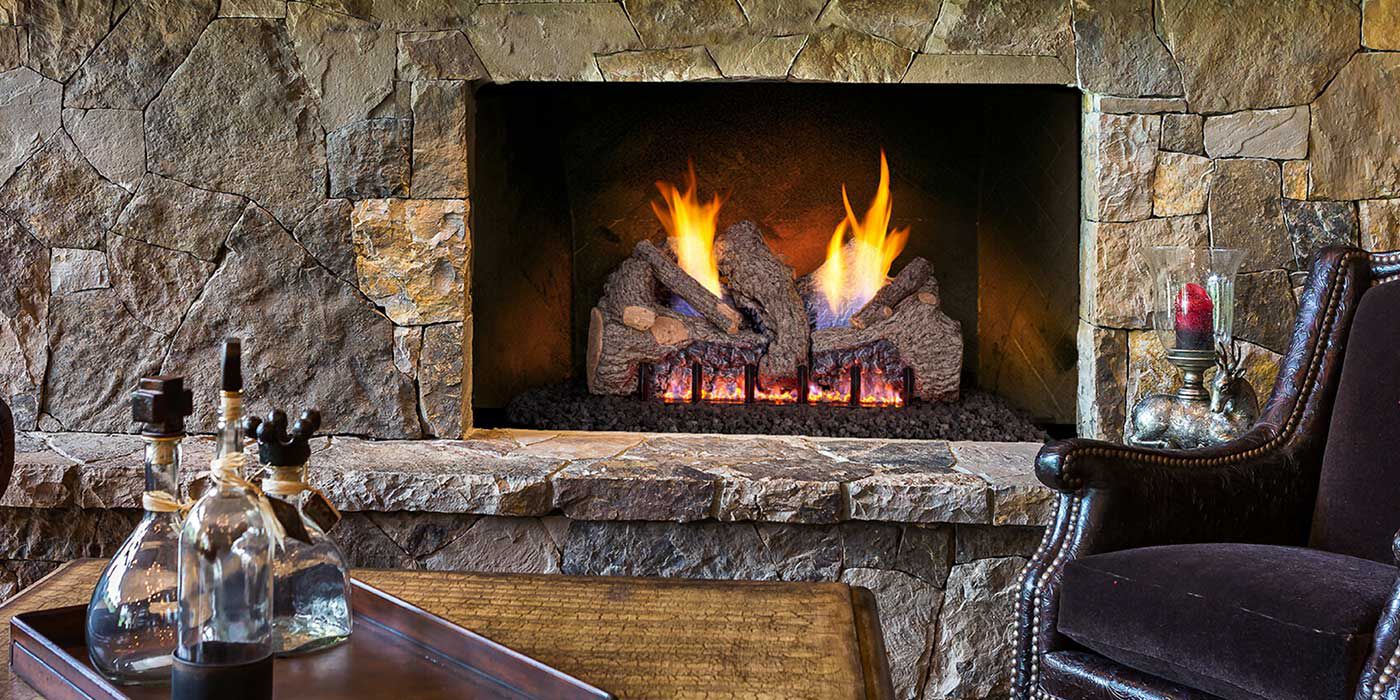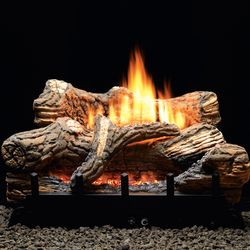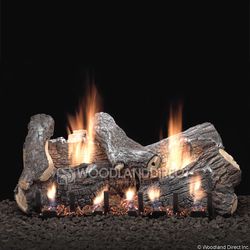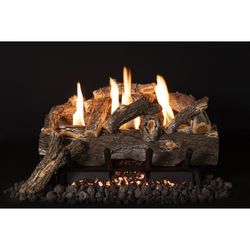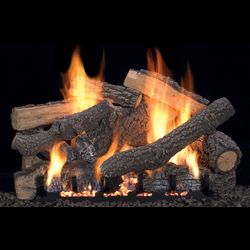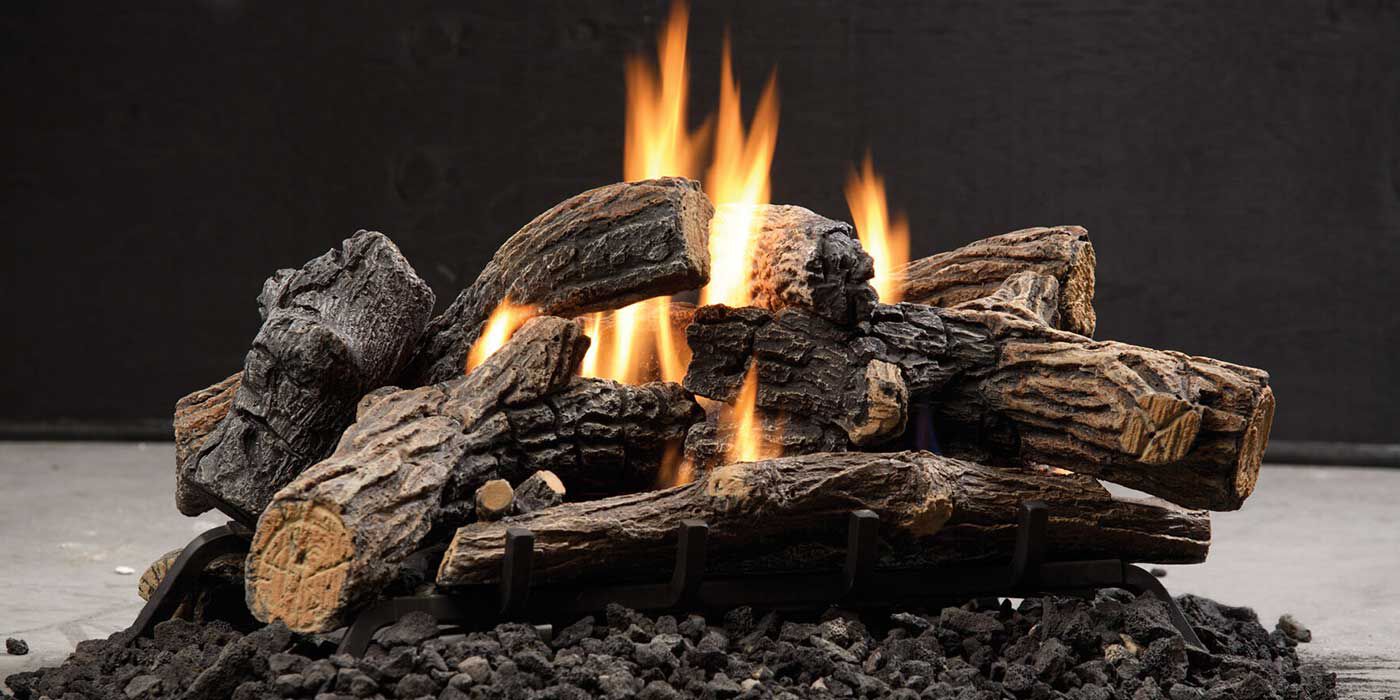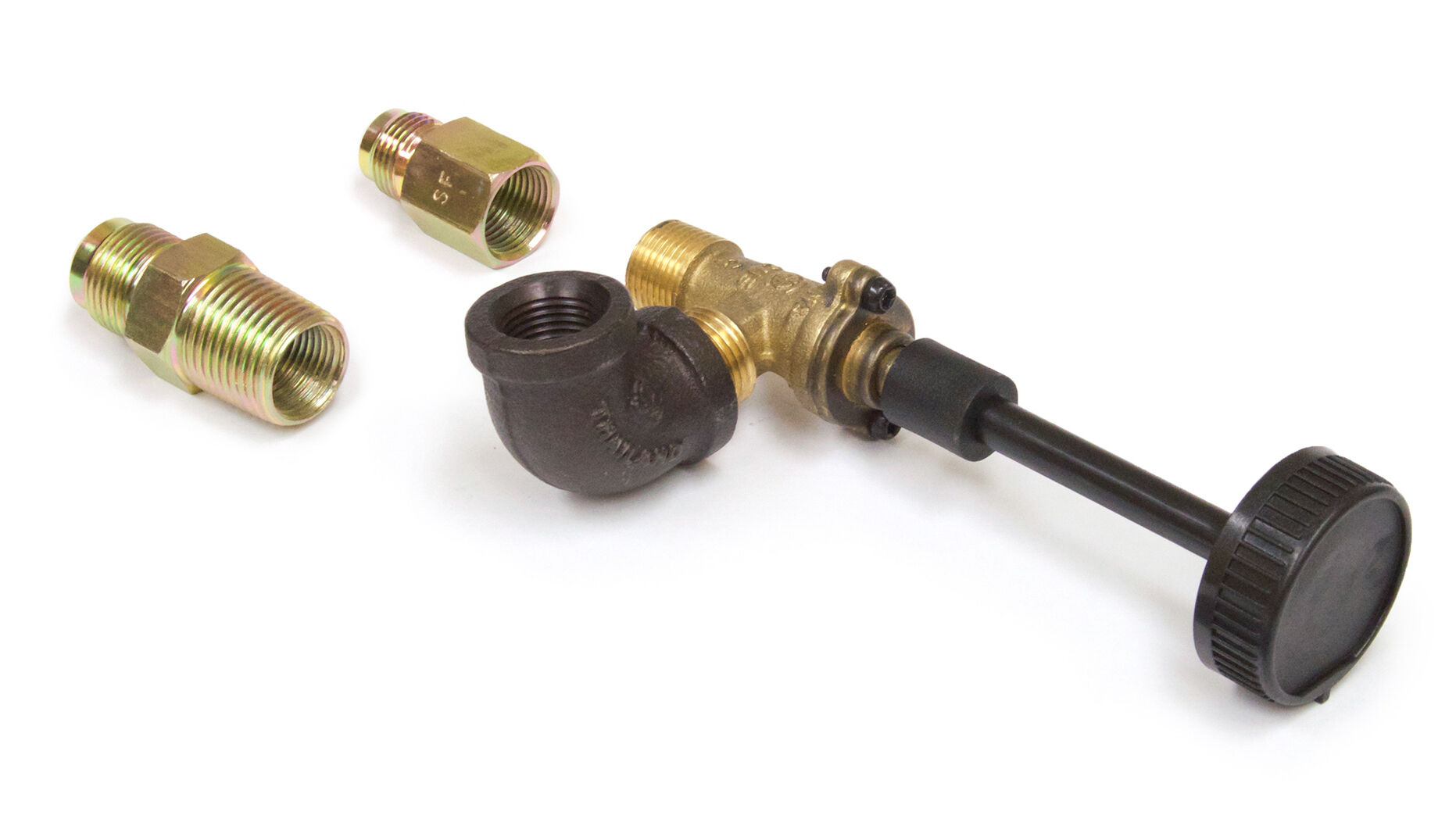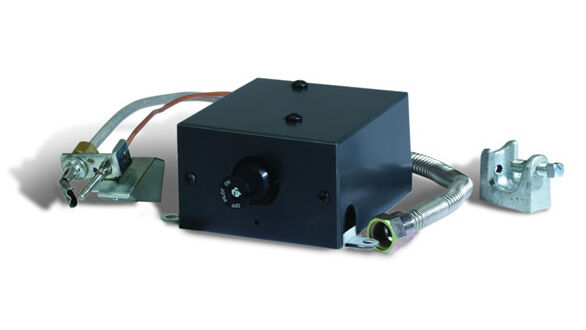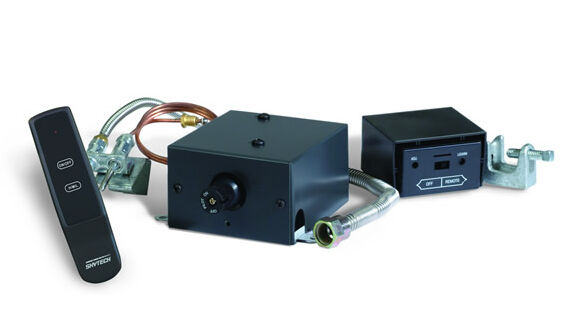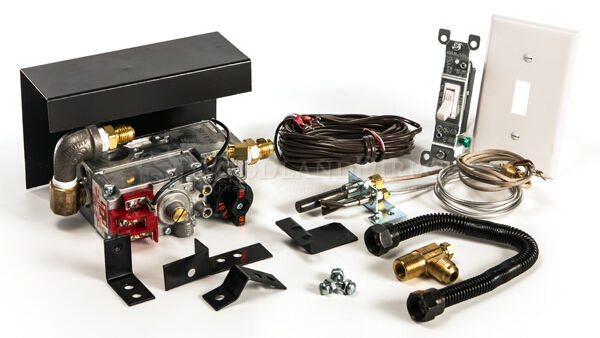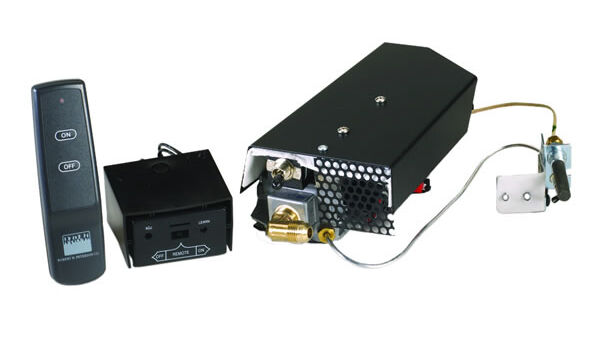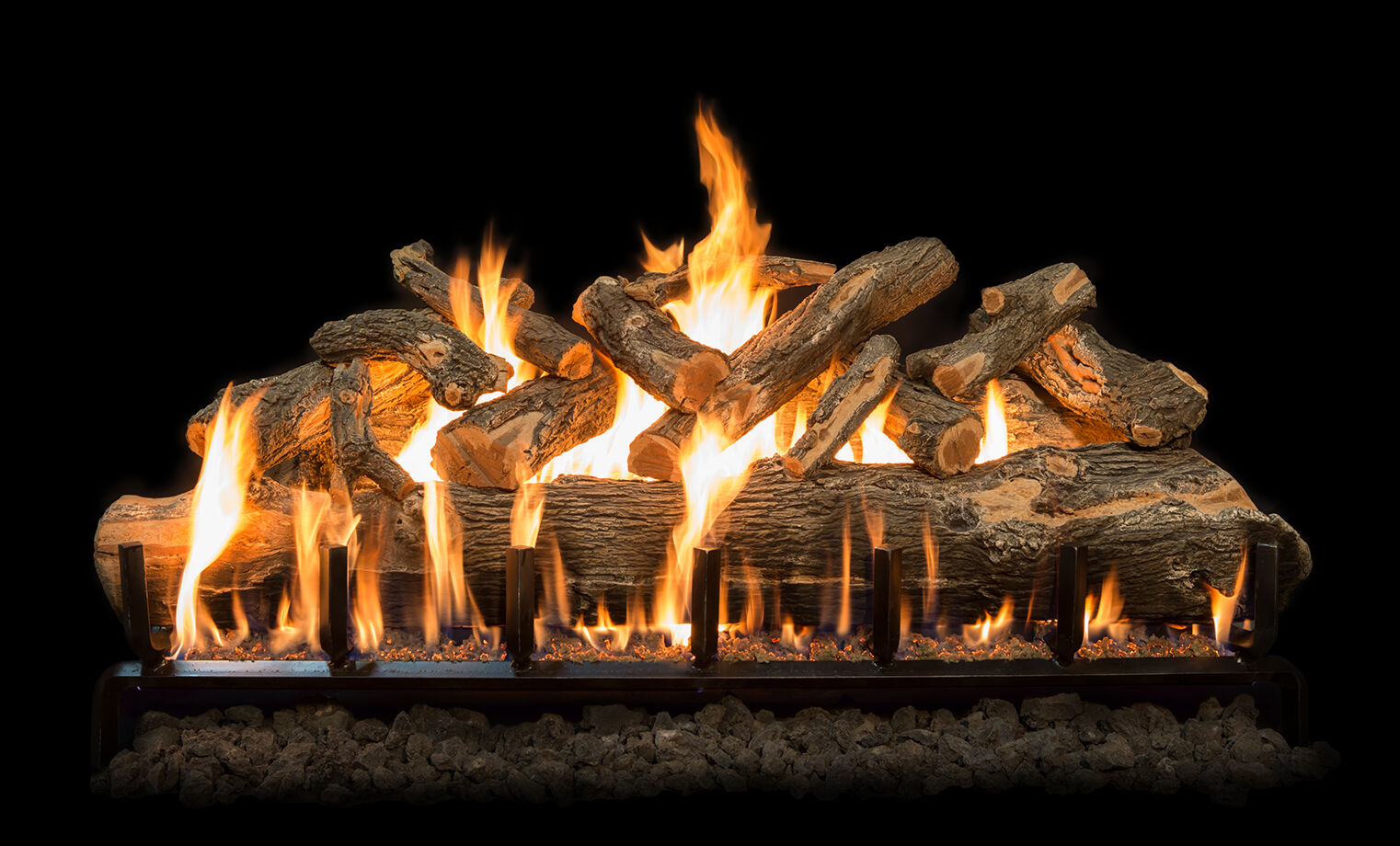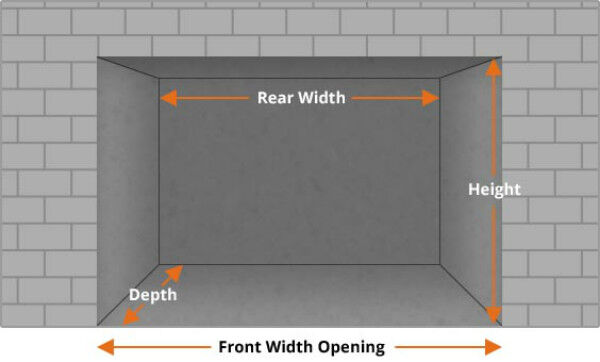By: Tom Regis, NFI Certified Master Hearth Professional
Last Updated: September 18, 2024
Gas logs are a safe, affordable, mess-free alternative to wood logs. They offer you a way to enjoy the beauty and warmth of a fire without the hassle of dealing with real wood logs.
Below, we explore all the gas log styles available, how to control them, and how to find the perfect size for your fireplace!
Gas Log Styles
Vented Gas Logs
Vented gas log sets are the best options for existing wood burning fireplaces with working chimneys. They're the most authentic-looking replacement for real wood logs, offering lifelike detailing and tall, golden flames.
To use your Vented log set safely, you'll need to keep your chimney damper open. This prevents the buildup of harmful combustion byproducts, like carbon monoxide. Since the damper must be open, almost all the heat your fireplace produces escapes through the chimney. For this reason, Vented logs are an inefficient source of heat.
Burners for Vented gas log sets are either standard or ANSI-certified. If you receive a standard burner, you'll assemble it on site. ANSI-certified burners arrive fully assembled and tested for safety and efficiency.
Keep in mind, certain cities require an ANSI-certified burner. Check your area's fire codes to make sure your burner complies.
Vented Gas Log Pros
- Tall, robust flames replicate a real wood burning fire
- Lifelike bark detailing looks like natural wood
- No BTU limits
- ANSI-certified and standard burners available
- Expansive ember bed for a realistic look
- Flames can touch logs
- Can rearrange logs to your liking
Vented Gas Log Cons
- Roughly only 10% efficient
- Requires venting and the use of a damper clamp
- Chimney damper must always stay open
- Significant heat loss through the chimney (inefficient heat source)
Our Most Popular Vented Gas Log Sets
Ventless Gas Logs
The term “Ventless” or “Vent-Free” comes from the fact that Ventless gas log sets don’t require a chimney or venting to operate. These clean-burning log sets achieve smokeless flames and burn at nearly 100% efficiency.
Little to no gases remain after combustion. The byproducts produced are safe, typically made of water vapor and carbon dioxide. Toxic gases, like carbon monoxide, will be minimal and within safe limits.
The flames from a Ventless log set are often blue and much smaller than the flames produced by a Vented set. While Ventless logs can still achieve a realistic-looking fire, they may not be as large or as authentic-looking.
Ventless gas logs produce water vapor as they burn. Without venting, excess moisture or condensation may appear on your windows or surfaces throughout the room. This is especially true if you use Propane-fueled logs.
Minimal amounts of moisture can be a great source of humidity in the winter, but larger amounts can lead to mold or mildew growth. Crack a window near your Ventless log set as it burns to restore balance to the air in your home.
Ventless logs may also give off an odor, since the combustion air cannot escape through a chimney. They may also intensity odors that are already present in your home. If you use air fresheners, incense, candles, and perfumes, or have dust or pet dander throughout your home, Ventless logs can enhance those scents.
Although exhaust from Vent-Free gas logs is minimal, it can cause irritation to the lungs. If there's someone in your household with allergies or sensitivity to smells, then a Ventless gas log set may not be the best option.
According to the national code, Ventless burners must be ANSI-certified. They're factory assembled and tested for safety and efficiency prior to shopping. You will not be able to modify your Ventless burner in any way after it has been ANSI-certified.
You must stack your Ventless logs in a specific pattern, outlined in the installation manual. The flames cannot touch the logs, otherwise they'll produce carbon monoxide. Make sure you follow the pre-determined pattern for your log set to ensure a safe burning experience.
While Ventless logs are safe, they're slightly controversial for the fact that they must always function optimally. If there's any issue with your Ventless log set, it can release dangerous gases into your home. Some states, such as California, have outlawed Ventless appliances for indoor use, while other states have strict installation requirements. Be sure to double-check your city's fire codes to make sure you're in compliance.
Your Ventless log set will likely come with a built-in Oxygen Depletion Sensor (ODS). This feature monitors the oxygen levels in your home, shutting off the gas supply if the level dips below the safe threshold of 18%.
Ventless appliances can only produce up to 40,000 BTUs of heat per hour. They're even more limited for bedroom and bathroom installations, allowing only 6,000 to 10,000 BTUs of heat per hour.
Ventless Gas Log Pros
- 99.9% efficient
- More heat enters your home
- Less gas consumption
- No venting required
- Equipped with Oxygen Depletion Sensor (ODS)
- All burners are ANSI-certified, tested, and factory assembled
Ventless Gas Log Cons
- Smaller and less realistic flame appearance
- 6,000-40,000 BTU limit
- Cannot modify burners
- Must arrange logs in a specific pattern to prevent direct contact with flames
- More installation restrictions
- Minimal exhaust remains after combustion
- Produces an odor while burning and intensifies odors present in your home (air fresheners, incense, dust, pet dander, etc.)
- Increases humidity levels in the home
- Can cause lung irritation to those with severe allergies and chronic lung conditions
Our Most Popular Ventless Gas Log Sets
Gas Log Materials
Most gas logs are ceramic fiber or a refractory cement mixture that can withstand extreme temperatures. Some logs even have steel reinforcement rods added to the middle for extra strength.
Refractory cement logs are durable and retain their colors and details for much longer than ceramic fiber logs.
Gas logs are typically cast from real tree samples or crafted from highly detailed molds. Refractory cement designs are the most realistic with hand-painted details that capture every unique marking. Ceramic fiber logs are excellent at retaining heat. They can radiate warmth even after you switch the fireplace off.
Gas Log Control Options
Match-Lit
Match-lit ignitions are the simplest and most affordable way to light your gas log set. The system doesn't include a pilot or valve assembly. You'll simply place a match or lighter near the burner and turn on your gas supply with the included gas key valve. Match-lit systems are only available with Vented gas log sets fueled by Natural Gas.
Manual Safety Pilot
Manual Safety Pilots, or Safety Pilot Kits (SPKs) have flame-sensing thermocouples. Instead of lighting your log set with a match, you'll turn on your gas supply, push a knob on the gas valve, and turn it to the "On" position. Once your log set ignites, you can release the knob and the pilot stays lit. If the flame goes out, the system automatically shuts off your gas supply.
Millivolt Valve
Millivolt gas valves are also similar to SKUs. They use a thermopile to generate a larger millivolt current. This allows you to connect a remote control, wall switch, timer, or thermostat to your gas log set. Millivolt systems don't require external power, because they operate solely off the pilot light, which stays lit.
Electronic Valve
Electronic ignition systems are the safest and most convenient way to operate your log set. Some require a source of power, but most are battery-operated. With an electronic gas valve, the pilot will not stay lit. You can turn the pilot light on and off and adjust the flame height on your gas log set using a remote control, a wall switch, or a switch on the gas valve.
Gas Log Set Components
- Gas valve
- Pilot assembly
- Burner
- Steel grate
- Logs
- Sand or vermiculite
- Glowing embers
- Damper clamp
- Assembly accessories
Gas Log Sizing
Manufacturers determine gas log sizing. Be sure to check the sizing requirements and clearance recommendations before purchasing a log set.
Improperly sized gas logs can overheat your firebox and the gas valves, which can cause permanent damage to your log set, fireplace, and home.
How to Find the Right Size Log Set
Generally, taking a few quick measurements can help you estimate which size gas logs will fit your fireplace.
To get the proper fit, measure the front width, rear width, depth, and height of your firebox.
We're Here to Help
Do you need help narrowing down your log set options? Call our team of NFI certified experts today at 800.919.1904 and we'll be happy to assist you.
More Resources
Check out the top six reasons gas logs make great alternatives to wood burning fireplaces.
Learn the differences between Vented and Ventless units to find the best option for your home.
Find answers to the most frequently asked questions about gas logs.
 |
Thomas Regis has been a Technical Sales Representative at Woodland Direct for four years. An NFI-Certified expert, Thomas effortlessly directs his clients toward the perfect products, offering essential installation and safety advice. He's tackled projects of all sizes, from backyard fire pits to custom indoor fireplaces. He has even helped Amy Adams, owner of the Tennessee Titans, find a new fireplace for her home! Beyond his professional achievements, Thomas actively participates in community service projects and enjoys spending time on the basketball court. Call him or one of our experts in fire at 800.919.1904. |
.jpg)
